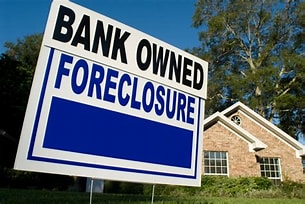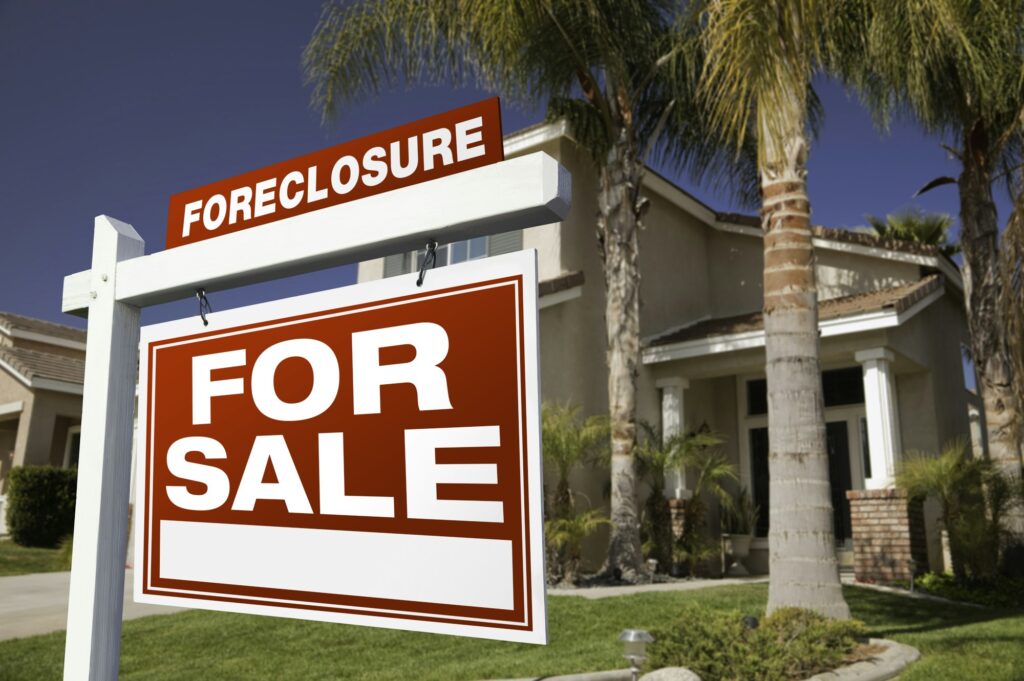Understanding Home Foreclosure
In order to navigate the various hardship programs available to homeowners in need, it is important to first understand the concept of home foreclosure and its consequences.
What is Home Foreclosure?
Home foreclosure occurs when a homeowner fails to make their mortgage payments, leading to the lender taking legal action to repossess the property. This process typically begins after a homeowner has missed multiple mortgage payments and the lender has exhausted other options to resolve the delinquency.
Foreclosure proceedings vary depending on state laws and the type of mortgage agreement. Generally, foreclosure involves a series of legal steps that culminate in the sale of the property in order to satisfy the outstanding debt. The exact timeline and process can differ, but the result is the same: the homeowner loses their property and faces significant financial consequences.
Consequences of Home Foreclosure
The consequences of home foreclosure can be severe and long-lasting. Some of the key repercussions include:
- Loss of Homeownership: The most obvious consequence of foreclosure is the loss of the home. Once the foreclosure process is complete, the homeowner must vacate the property, leaving them without a place to live.
- Negative Impact on Credit Score: Foreclosure has a detrimental effect on a homeowner’s credit score. It can significantly lower the credit score and remain on the credit report for up to seven years. This can make it difficult to secure future loans or credit.
- Difficulty Obtaining Future Financing: A foreclosure on the credit history makes it challenging to obtain financing for future home purchases or other major loans. Lenders may view individuals with a foreclosure on their record as high-risk borrowers.
- Emotional and Psychological Impact: Losing a home can take a toll on a person’s emotional well-being. It can cause stress, anxiety, and feelings of failure. Coping with the emotional impact of foreclosure is an important aspect of the recovery process.
Avoiding foreclosure and seeking assistance through hardship programs can help homeowners overcome these consequences and regain financial stability. By understanding the options available, homeowners can take proactive steps to prevent foreclosure and explore alternatives to protect their homes and financial well-being.
To learn more about government assistance programs, mortgage forbearance, lender hardship programs, and additional resources for homeowners in crisis, continue reading the corresponding sections of this article. You can also explore our comprehensive guide on Why choose Venture REI as your home foreclosure avoidance resource for further information and assistance.
Navigating Hardship Programs
Government Assistance Programs
When facing financial hardship and the risk of home foreclosure, there are various government assistance programs available to provide support. These programs aim to help individuals and families meet their basic needs and maintain stable housing. Here are some key government assistance programs to consider:
SNAP, D-SNAP, and WIC
- SNAP (Supplemental Nutrition Assistance Program), D-SNAP (Disaster Supplemental Nutrition Assistance Program), and WIC (Women, Infants, and Children) are government programs that provide nutritious food assistance to individuals and families facing financial hardship. These programs help ensure that households have access to the food they need to maintain their well-being and navigate challenging times. To learn more about these programs and determine eligibility, visit the USA.gov website.
Unemployment Benefits
- Unemployment benefits may be available to individuals who qualify and are seeking financial assistance during periods of unemployment. These benefits can provide temporary financial support while individuals actively search for new employment opportunities. Eligibility requirements and benefit amounts vary by state, so it’s important to visit the USA.gov website or contact your local unemployment office to learn more about the specific benefits available in your area.
TANF (Temporary Assistance for Needy Families)
- TANF, also known as welfare, is a government program that can provide financial support to families facing financial challenges. It offers a range of services and benefits, including cash assistance, childcare assistance, job training, and more. TANF aims to promote self-sufficiency and help families overcome financial difficulties. To determine eligibility and apply for TANF, visit the USA.gov website or contact your local TANF office.
Emergency Housing Assistance and Rent Assistance
- Government programs offer emergency housing assistance and emergency rent assistance for individuals and families in need of immediate housing support. These programs can provide temporary shelter, rental payment assistance, and resources to help individuals avoid homelessness. To explore available options and eligibility requirements, visit the USA.gov website or reach out to local organizations that specialize in housing assistance.
Affordable Housing Programs
- Government programs provide assistance for affordable housing, making it more accessible for individuals and families with limited financial resources. These programs offer subsidized housing options and rental assistance programs to help individuals secure safe and affordable housing. To find out if you qualify for affordable housing assistance, visit the USA.gov website or contact your local housing agency.
Navigating the various government assistance programs can be complex, and eligibility requirements may vary. It’s important to research and understand the specific programs available in your area to determine which ones align with your needs. Additionally, consider seeking guidance from local housing counselors or nonprofit organizations that specialize in foreclosure prevention and financial assistance to ensure you have comprehensive support throughout the process.
Mortgage Forbearance
Mortgage forbearance is a valuable option for homeowners facing financial hardship and struggling to make their mortgage payments. It provides temporary relief by allowing homeowners to pause or reduce their mortgage payments for a specific period. Let’s explore the overview, eligibility, benefits, and considerations of mortgage forbearance, as well as the protections provided by the CARES Act.
Overview of Mortgage Forbearance
Mortgage forbearance is available for federally-backed mortgages, including those insured by the Federal Housing Administration (FHA), the U.S. Department of Veterans Affairs (VA), or the U.S. Department of Agriculture (USDA), and mortgages owned by Fannie Mae or Freddie Mac. It provides a temporary break from making full or partial mortgage payments, granting homeowners some financial breathing room during challenging times (Consumer Financial Protection Bureau).
During the forbearance period, homeowners are not required to make their regular mortgage payments. However, it’s important to note that mortgage forbearance is not loan forgiveness. The missed payments will need to be repaid, but homeowners have options for repayment that can be discussed with their loan servicer.
Eligibility for Mortgage Forbearance
To be eligible for mortgage forbearance, homeowners must demonstrate financial hardship, such as job loss, reduced income, or increased expenses due to unforeseen circumstances. Each mortgage program and servicer may have specific requirements, so it’s crucial to contact the loan servicer directly to understand the eligibility criteria and initiate the forbearance process.
Benefits and Considerations of Mortgage Forbearance
Mortgage forbearance offers several benefits to homeowners facing financial difficulties. It provides temporary relief by suspending or reducing mortgage payments, alleviating immediate financial strain. During the forbearance period, homeowners are protected from foreclosure actions.
Additionally, homeowners in mortgage forbearance can have their credit scores protected. Lenders are required to report the account as current during the forbearance period, preventing any negative impact on credit scores (Consumer Financial Protection Bureau).
However, it’s important to consider certain aspects of mortgage forbearance. While it provides temporary relief, homeowners need to understand that the missed payments will still need to be repaid. Repayment options vary and can be discussed with the loan servicer. Homeowners may have the option to extend the loan term, create a repayment plan, or pursue other alternatives.
CARES Act Protections for Homeowners
Under the Coronavirus Aid, Relief, and Economic Security (CARES) Act, homeowners with federally-backed mortgages are provided additional protections during the forbearance period. These protections include a foreclosure moratorium, which prohibits lenders from initiating foreclosure proceedings, and the right to request an extension of the forbearance period if needed.
It’s important for homeowners to understand their rights and the specific provisions of the CARES Act that apply to their situation. To learn more about the protections and assistance available, homeowners can visit the government assistance programs for foreclosure prevention section of our website.
By exploring mortgage forbearance and understanding its overview, eligibility, benefits, and considerations, homeowners can make informed decisions and take the necessary steps to navigate their financial hardships. Seeking guidance from professionals and staying informed about available resources can help homeowners in crisis find the best solutions to avoid foreclosure and regain stability.
Lender Hardship Programs
When facing financial difficulties, homeowners may find relief through lender hardship programs. These programs are offered by various lenders, including mortgage companies and credit card companies, to assist consumers who are unable to make regular payments on their accounts due to difficult life events.
Introduction to Lender Hardship Programs
Lender hardship programs are designed to provide temporary relief to homeowners experiencing financial hardship. These programs aim to help individuals avoid foreclosure and work towards regaining stability in their financial lives. By offering options such as interest rate reductions, extended loan terms, or deferred payments, lenders strive to find mutually beneficial solutions for both the borrower and themselves.
Applying for a Lender Hardship Program
To apply for a lender hardship program, individuals should contact their lender’s customer service department. During this initial communication, it is crucial to provide a detailed explanation of the financial hardship being faced. By openly discussing the situation, borrowers can help their lenders understand the challenges they are encountering and explore possible solutions.
Necessary Documentation for a Lender Hardship Program
When requesting a lender hardship program, it is important to gather all relevant financial information. This may include loan documents, recent pay stubs, bank statements, and any documentation outlining the current financial situation. By having these documents readily available, individuals can provide their lenders with a comprehensive understanding of their financial circumstances.
Reviewing and Accepting Offers
After submitting the necessary documents, individuals should follow up with their lender to confirm receipt and inquire about the expected timeline for a decision. Lenders will review the application and evaluate the borrower’s eligibility for the hardship program. Once the lender has reached a decision, they will present an offer to the borrower.
When reviewing the offer, it is essential to carefully consider the proposed terms and conditions. Individuals should assess whether the offer aligns with their financial goals and if it provides the necessary relief to overcome their current hardship. If satisfied with the terms, borrowers can accept the offer by notifying the lender and signing an agreement outlining the new terms.
In cases where individuals do not qualify for a lender hardship program, it may be necessary to seek outside assistance. Foreclosure counseling can provide guidance for mortgage issues, while credit counseling agencies can assist with credit card debts. Additionally, individuals may explore options such as a debt management plan, which can help reduce interest rates and create a more affordable payment plan.
By exploring lender hardship programs and working closely with their lenders, homeowners facing financial hardships can navigate through their difficulties and find solutions that best suit their needs. It is important to remember that seeking assistance and being proactive in exploring available options can greatly contribute to regaining financial stability. For more information on foreclosure avoidance and related topics, visit our article on homeownership preservation resources.
Additional Resources and Programs
When facing the possibility of foreclosure, homeowners in need can explore various additional resources and programs to help navigate this challenging situation. These resources offer valuable support and assistance to individuals seeking to avoid foreclosure and regain stability in their housing situations. Some notable options include:
Foreclosure Counseling
Foreclosure counseling services can provide homeowners with expert guidance and assistance throughout the foreclosure avoidance process. These counselors are trained professionals who can help homeowners understand their rights, explore available options, and create a personalized plan to address their specific circumstances. To access foreclosure counseling services, homeowners can reach out to organizations like the Mississippi Foreclosure Prevention Consortium, which offers counseling services, foreclosure prevention workshops, and access to hardship programs (Source).
Credit Counseling and Debt Management Plans
Credit counseling and debt management plans are essential resources for homeowners struggling with debt. Non-profit organizations in Mississippi offer confidential services to help families get out of debt and improve their long-term financial condition. These services may include budgeting assistance, debt repayment plans, and financial education to help homeowners regain control of their finances (Need Help Paying Bills).
Emergency Rental Assistance Programs
Emergency rental assistance programs are designed to provide financial aid to eligible households affected by crisis situations, such as the COVID-19 pandemic. These programs can help tenants with rental and utility arrears, providing significant economic relief to low- and moderate-income households. In Mississippi, the Emergency Rental Assistance Program (ERAP) offers direct payments to landlords/property owners and utility companies on behalf of tenants who have experienced financial hardship due to the pandemic (OTDA).
State-Specific Programs
In addition to national programs, there are state-specific resources available to homeowners in need. Mississippi, for example, offers various resources for households with disabled members, including medical care, free food, housing, medications, and financial assistance such as Supplemental Security Income (SSI) from the government (Need Help Paying Bills). The state also provides assistance through the Low-Income Home Energy Assistance Program (LIHEAP) to help eligible households pay for home utility bills, including heating and cooling expenses (Need Help Paying Bills).
By exploring these additional resources and programs, homeowners can find valuable support and assistance to help them navigate the foreclosure process and work towards regaining stability in their housing situations. It’s important to research and reach out to these organizations to access the specific help and guidance needed for their individual circumstances.
Relief Funds and Charitable Assistance
During times of financial hardship, relief funds and charitable assistance can provide much-needed support to homeowners in crisis. These resources offer financial assistance to individuals facing unforeseen disasters and personal hardships. Understanding how relief funds work and the regulatory requirements they must adhere to is crucial for homeowners seeking assistance. Additionally, there are employee-focused relief funds and specific homeowner assistance programs available, such as those in Mississippi.
Understanding Relief Funds
Relief funds serve as a vehicle for providing financial assistance to individuals in need. These funds can offer tax-deductible donations and tax-free grants within the United States when they comply with regulatory requirements (Blackbaud). They play a significant role in helping homeowners navigate financial crises and avoid the devastating consequences of foreclosure.
Regulatory Requirements for Relief Funds
Relief funds must comply with regulatory requirements to ensure transparency and accountability. These requirements help maintain the integrity of the funds and ensure that they are used for their intended purpose. Failure to comply with these requirements can result in the revocation of tax-exempt status. It is important for homeowners to be aware of the regulatory framework and choose reputable relief funds that meet these requirements.
Employee-Focused Relief Funds
Employee-focused relief funds are designed to provide assistance to employees facing hardship. These funds often include full-time and part-time employees, retirees, contractors, and employees both in the United States and internationally. The funds must be open-ended, providing support to employees affected by current and future disasters. Compliance with regulatory requirements is essential to avoid issues with tax-exempt status (Blackbaud).
Mississippi Homeowner Assistance Programs
In Mississippi, there are specific homeowner assistance programs available to help individuals facing financial hardship. These programs aim to prevent foreclosure and provide support to homeowners in need. Some notable programs in Mississippi include:
MS Home Saver Plus Program
The MS Home Saver Plus Program is designed to assist homeowners who have encountered financial hardship due to the COVID-19 pandemic. The program provides support to homeowners who are past due on their mortgage payments or have experienced an eligible financial hardship resulting in delinquent mortgage payments or a COVID-19 mortgage forbearance. Eligible financial hardships include loss or reduction in income or a material increase in expenses after January 21, 2020.
Bank of America Settlement Programs
Bank of America Settlement Programs in Mississippi were established following a settlement requiring Bank of America to pay a total of $9.16 billion in direct payments to federal agencies and six states. These programs provide consumer relief, including first lien principal forgiveness, forbearance, second lien extinguishments, and other forms of assistance. The settlement funds aim to address the impact of the foreclosure crisis and provide relief to homeowners.
North Mississippi Rural Legal Services
North Mississippi Rural Legal Services (NMRLS) is an organization that offers foreclosure prevention, loan modification, loss mitigation, housing counseling, and other options to assist families in remaining in their homes. NMRLS provides valuable services to Mississippi homeowners and receives funding from various sources, including the Interest On Lawyers’ Trust Accounts (IOLTA) program. Homeowners can benefit from the free legal counsel, advice, and other services provided by NMRLS to navigate the foreclosure prevention process.
By understanding relief funds, regulatory requirements, employee-focused relief funds, and specific homeowner assistance programs like those in Mississippi, homeowners in crisis can explore available options and seek the support they need to avoid foreclosure. It is essential for homeowners to research and connect with reputable organizations and programs that can provide the necessary assistance during these challenging times.
Exploring Straighteners for Curly Hair
When it comes to taming curly hair, choosing the right straightener can make all the difference. There are several types of straighteners available in the market, each with their own unique features and benefits. In this section, we will explore three popular options: ceramic straighteners, tourmaline straighteners, and titanium straighteners.
Ceramic Straighteners
Ceramic straighteners are a popular choice for individuals with curly hair. These straighteners utilize ceramic plates that heat up quickly and distribute heat evenly across the hair strands. The gentle heat helps to minimize damage and frizz, leaving your hair sleek and smooth.
One of the key advantages of ceramic straighteners is their ability to maintain a consistent temperature, ensuring that your hair is evenly straightened from root to tip. Additionally, the smooth surface of the ceramic plates glides effortlessly through your hair, reducing the chances of snagging or pulling.
Tourmaline Straighteners
Tourmaline straighteners are another excellent option for those with curly hair. These straighteners feature plates infused with tourmaline, a semi-precious gemstone known for its ability to emit negative ions. When heated, these ions help to seal the hair cuticles, locking in moisture and reducing frizz.
The tourmaline plates also generate infrared heat, which penetrates the hair shaft without causing excessive damage. This gentle heating process ensures that your hair remains healthy and shiny, even after repeated use of the straightener.
Titanium Straighteners
For individuals with thick and coarse curly hair, titanium straighteners are often the preferred choice. These straighteners feature plates made from titanium, a lightweight and highly durable metal. Titanium plates heat up quickly and evenly, allowing for efficient straightening of even the most stubborn curls.
One of the main advantages of titanium straighteners is their ability to maintain a stable temperature throughout the styling process. This ensures consistent and long-lasting results, even in humid environments. Additionally, the smooth surface of the titanium plates allows for effortless gliding through the hair, minimizing the risk of damage.
When choosing a straightener, it’s important to consider your hair type and specific needs. Ceramic straighteners are suitable for most hair types and provide gentle, even heat distribution. Tourmaline straighteners are ideal for adding shine and reducing frizz. Titanium straighteners are excellent for tackling thick and coarse hair. Selecting the right straightener can help you achieve the sleek, straight look you desire while minimizing damage to your curls.








